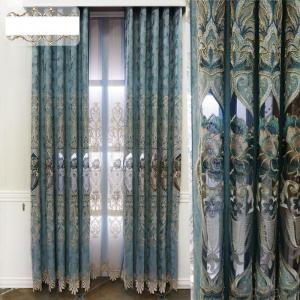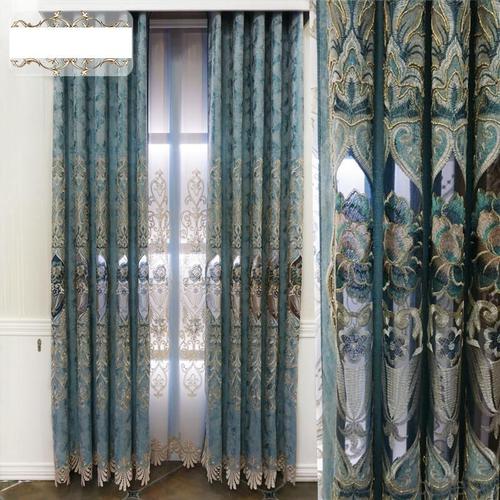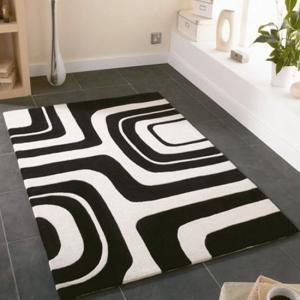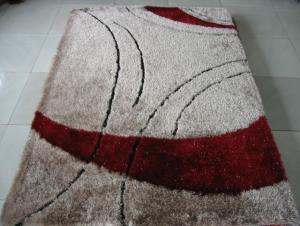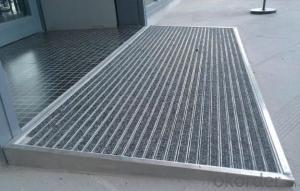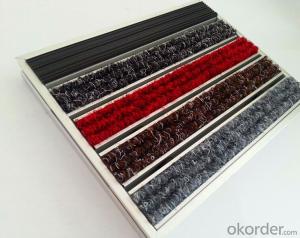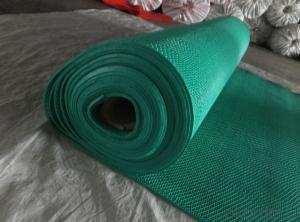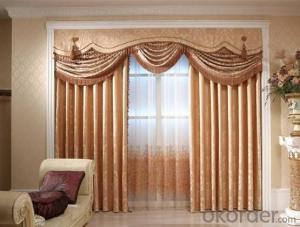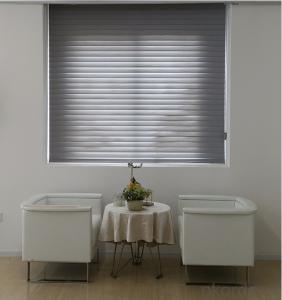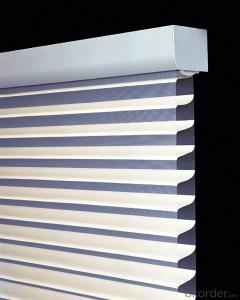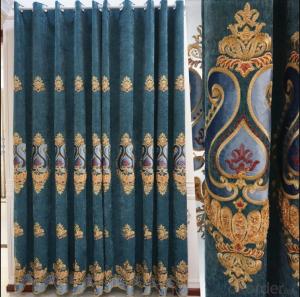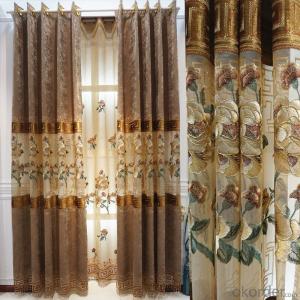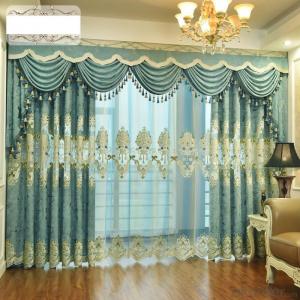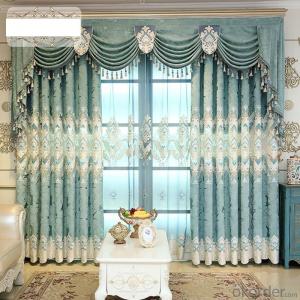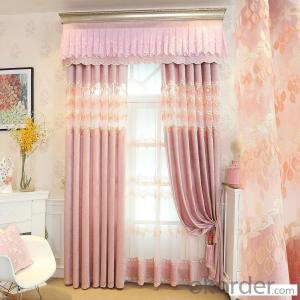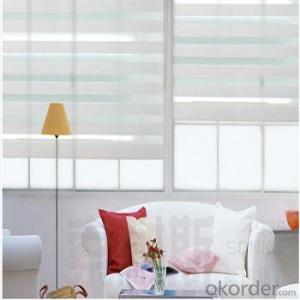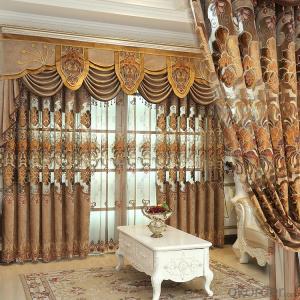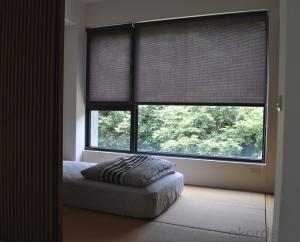Home curtain hotel curtain blackout curtain Chenille hollow water soluble embroidery curtain fabric
- Loading Port:
- Shanghai
- Payment Terms:
- TT OR LC
- Min Order Qty:
- 70 m
- Supply Capability:
- 9000 m/month
OKorder Service Pledge
OKorder Financial Service
You Might Also Like
| Product name | Chenille hollow water soluble embroidery curtain fabric |
| Design | chenill |
| Width | 280cm |
| MOQ | 70m |
| Used | For window curtain |
| Fabric roll | 100 meter - 150 meter |
| Delivery time | 3-5 days if instock |
| Shipping fee | The cheapest by air or by sea |
| Package | Elastic bags and woven bags |
*For samll quantity ,we go with LCL.
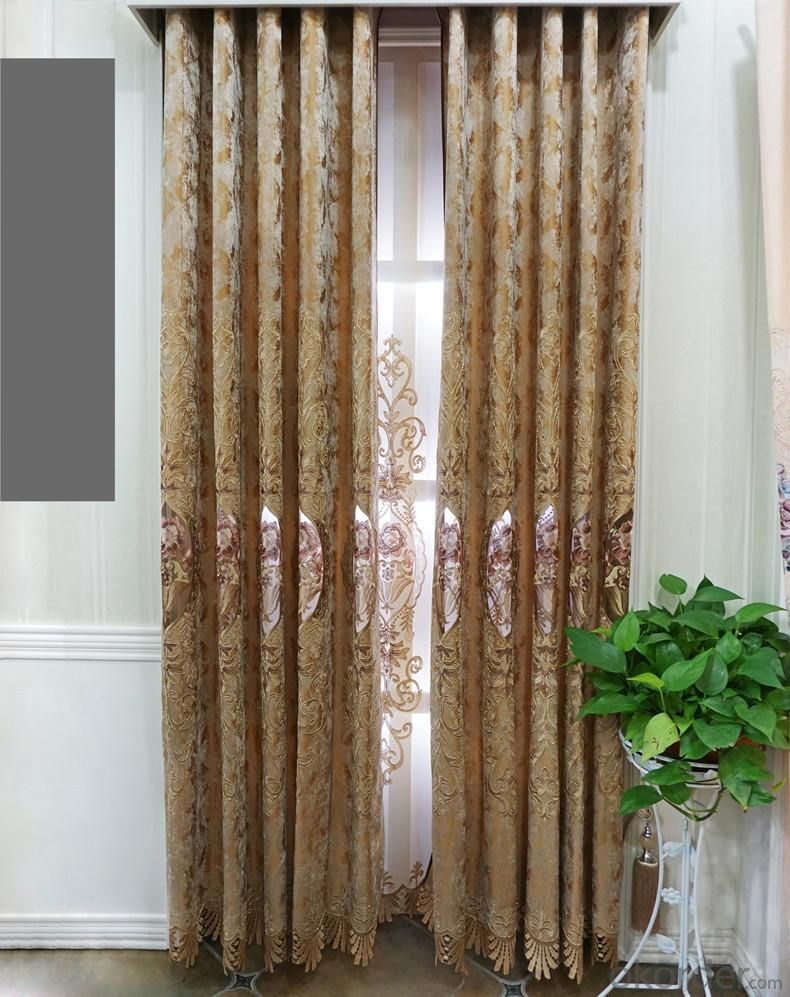 | ||
 | ||
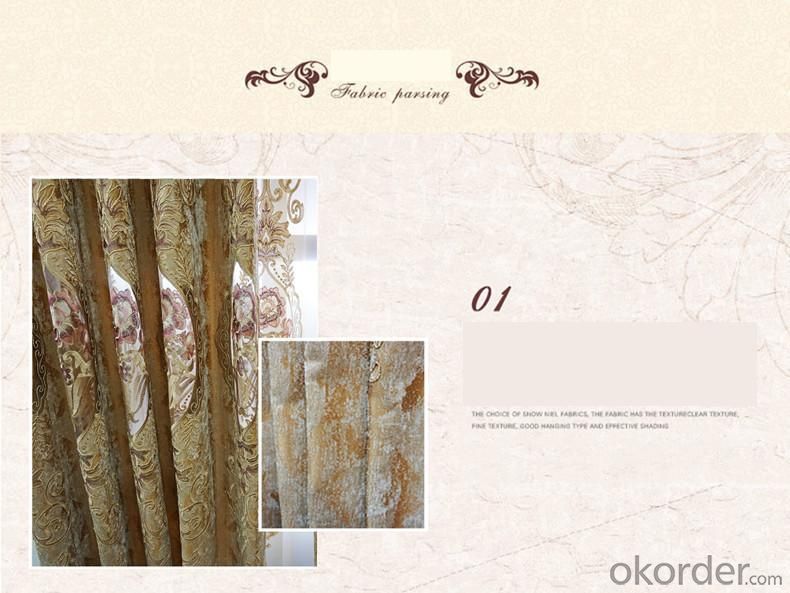 | ||
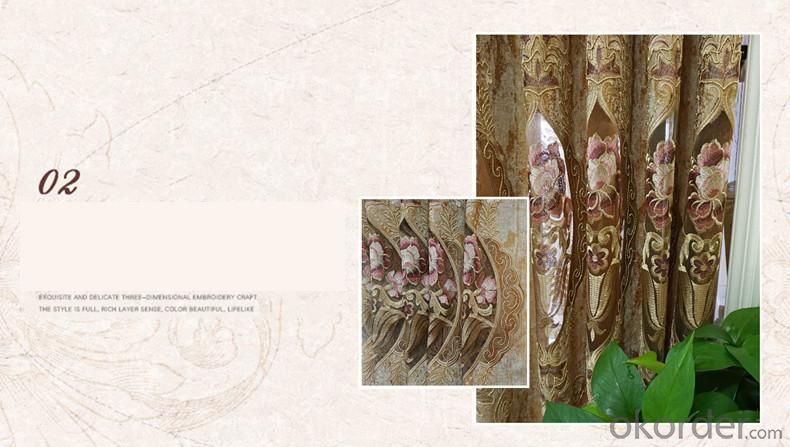
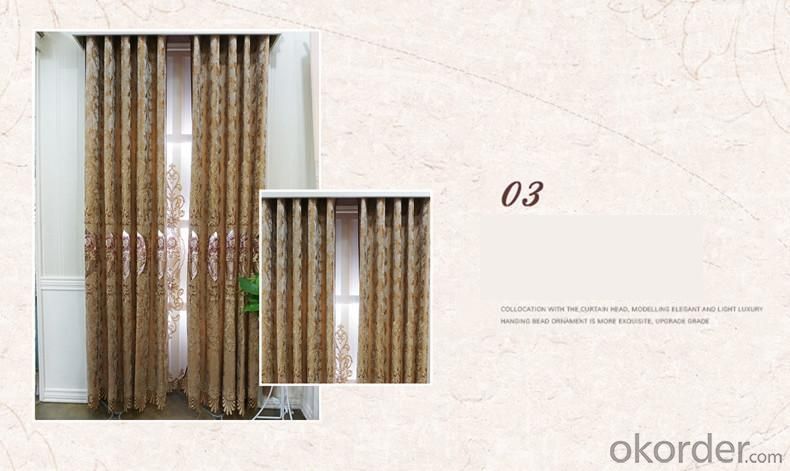
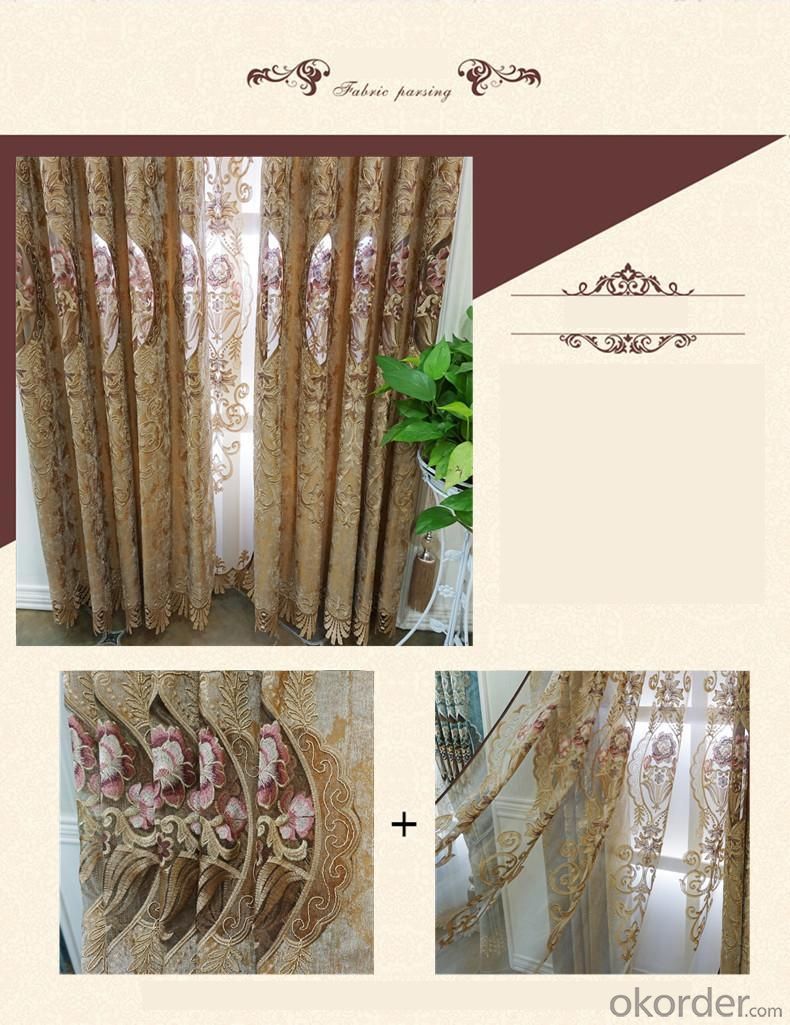
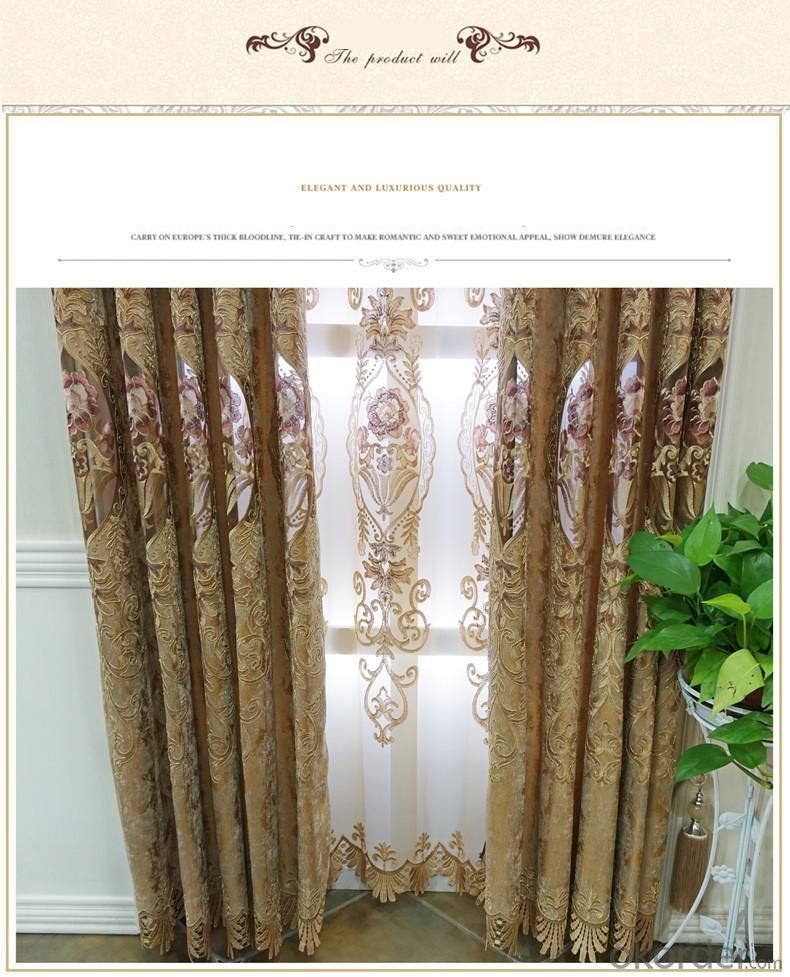
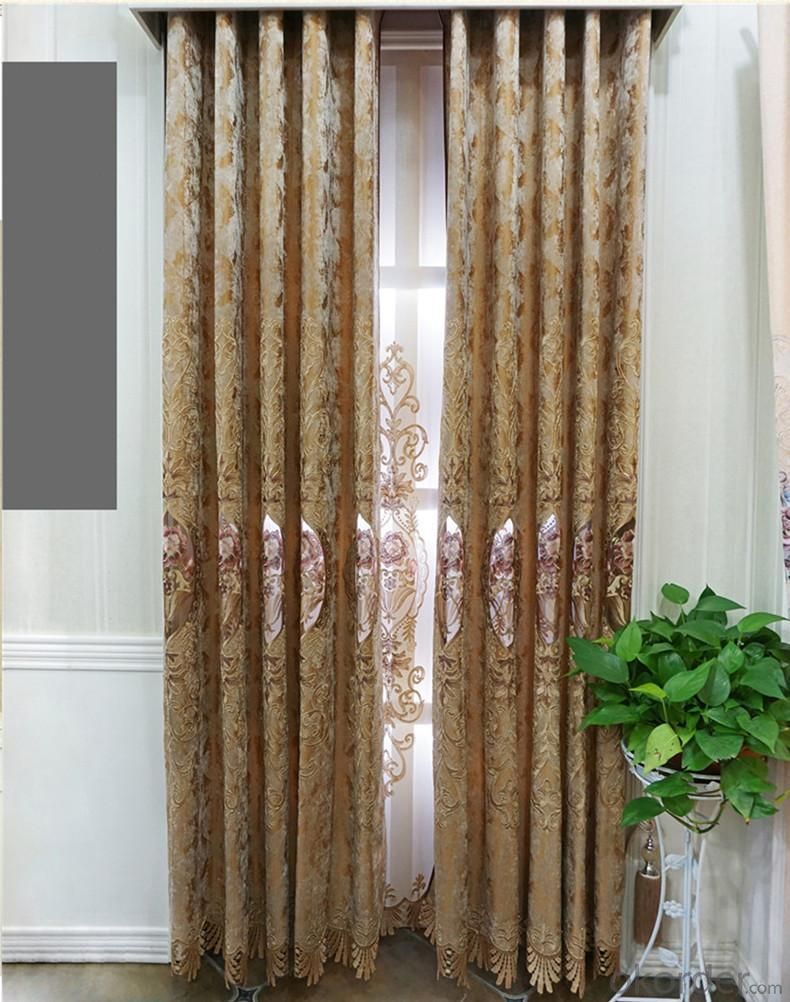
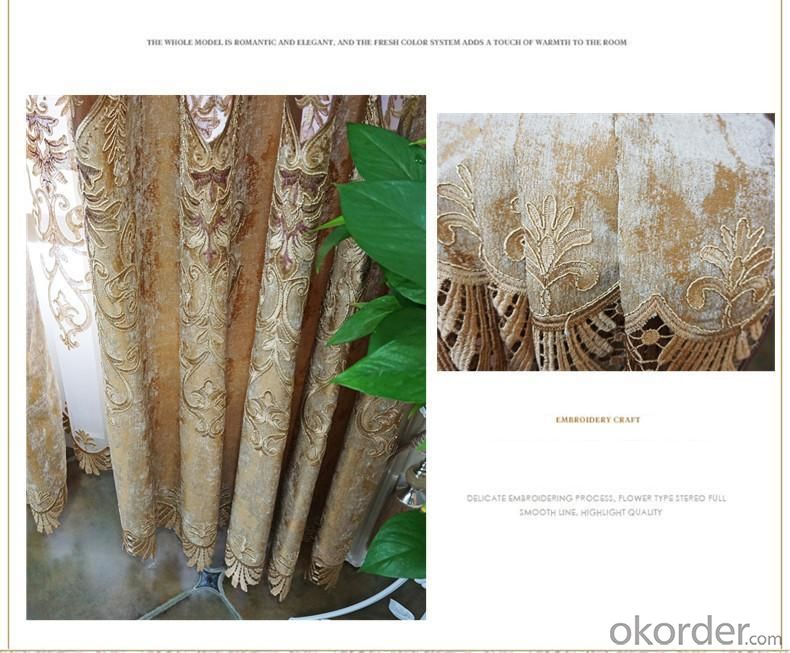
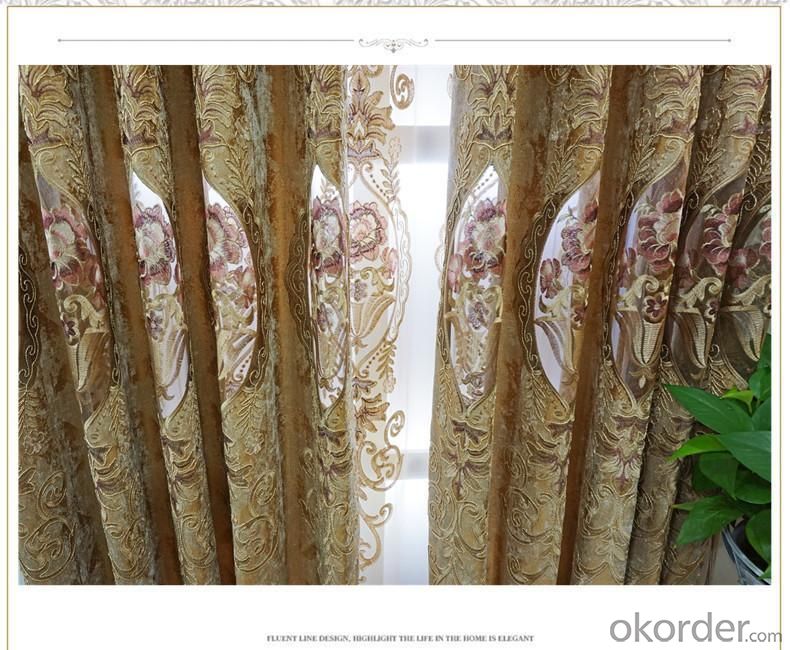
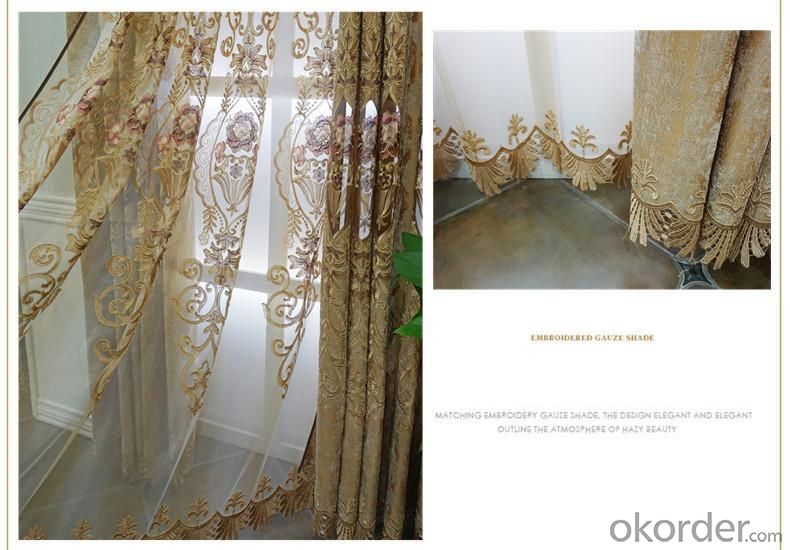
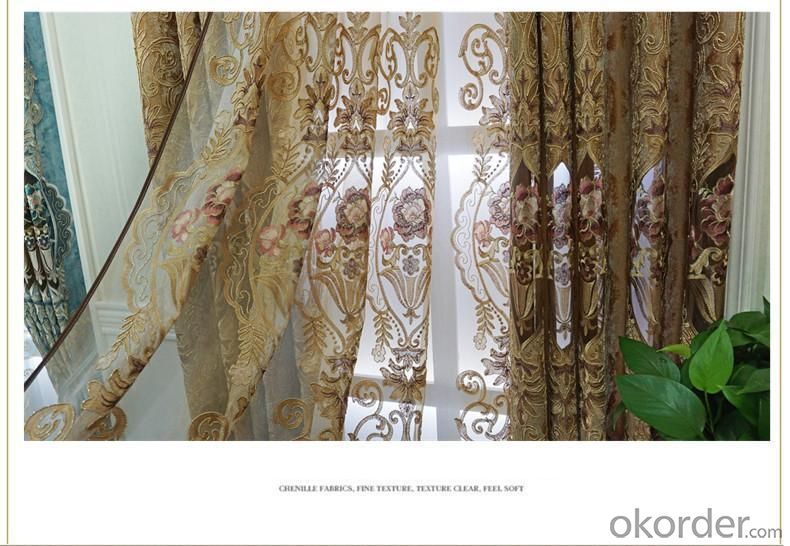
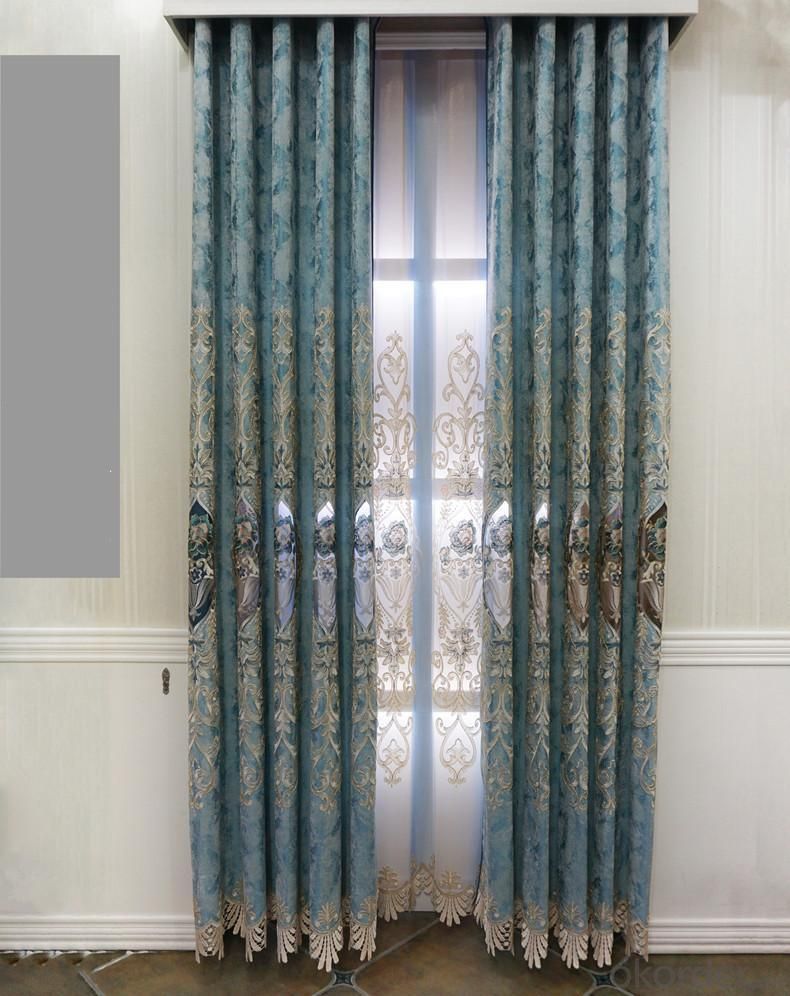
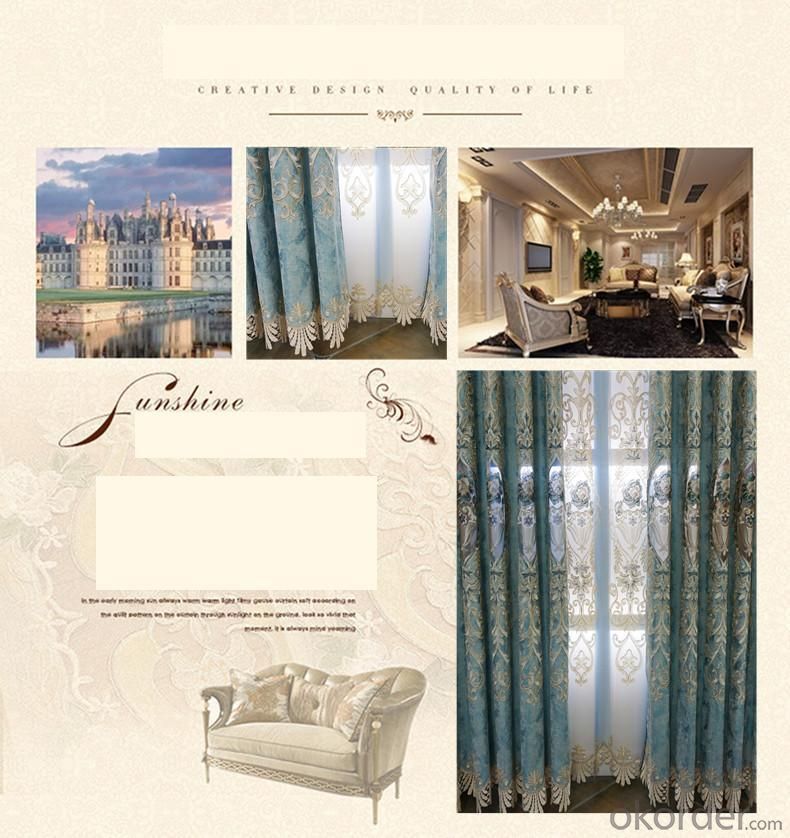
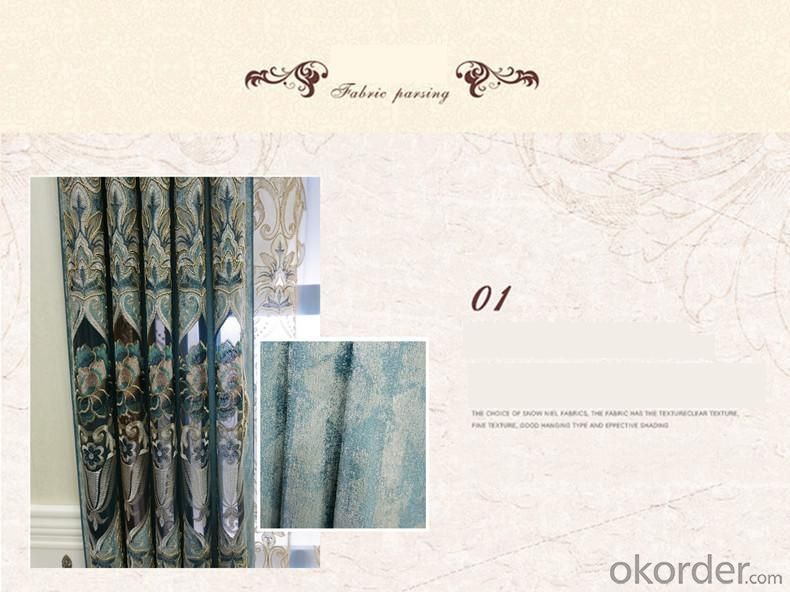
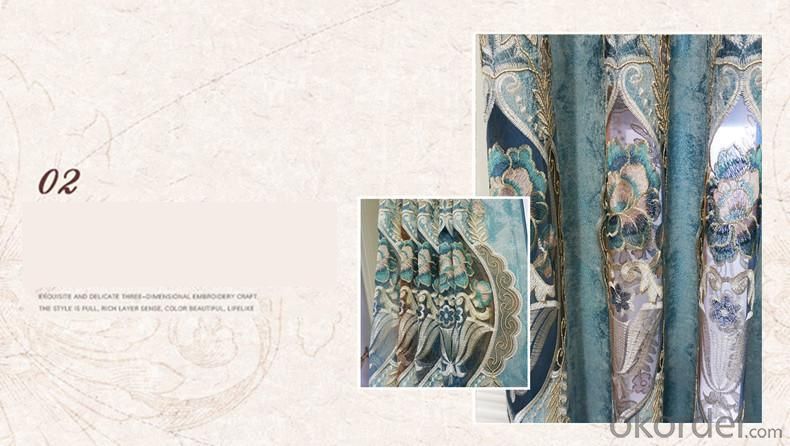
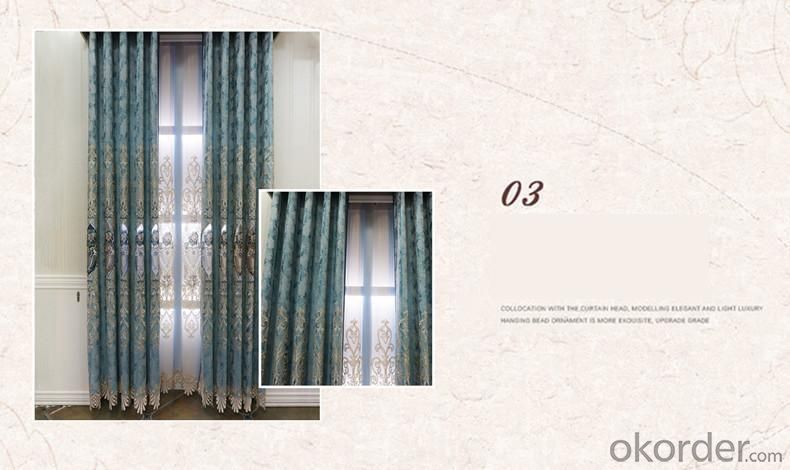
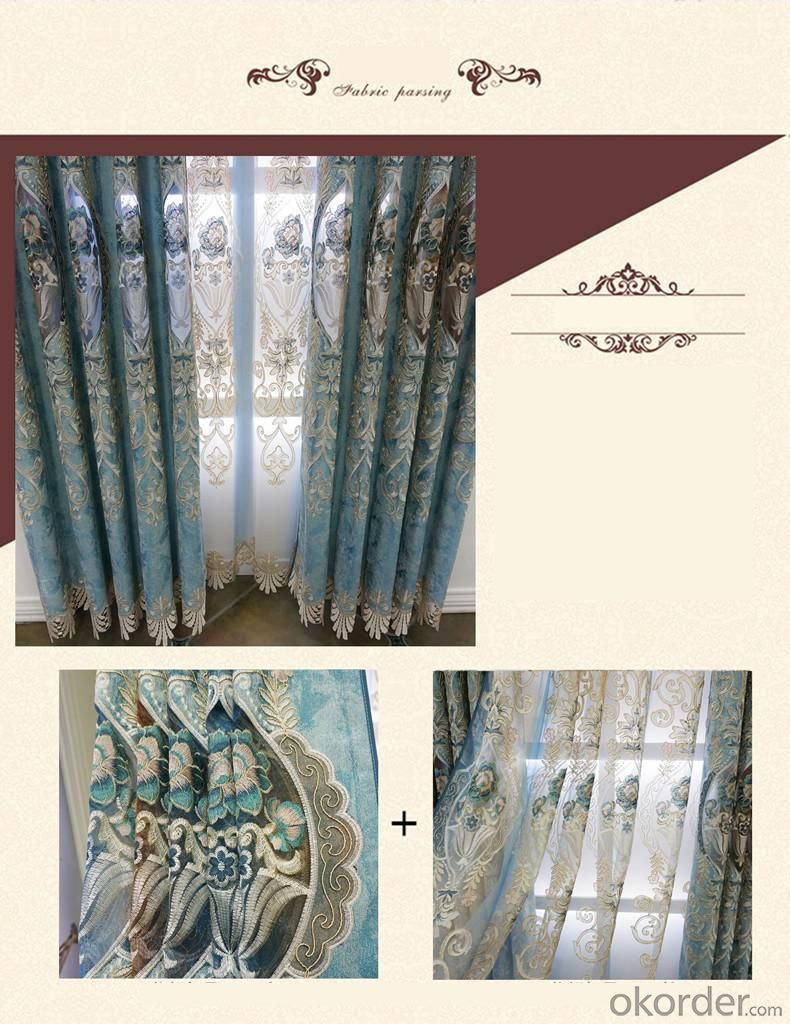
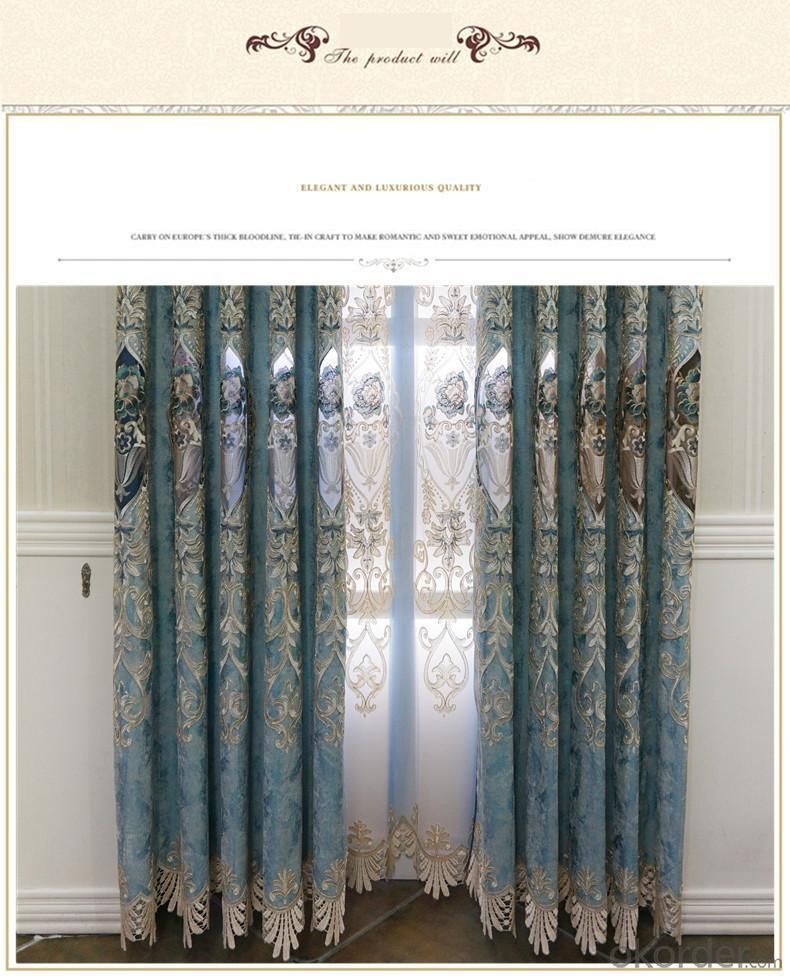
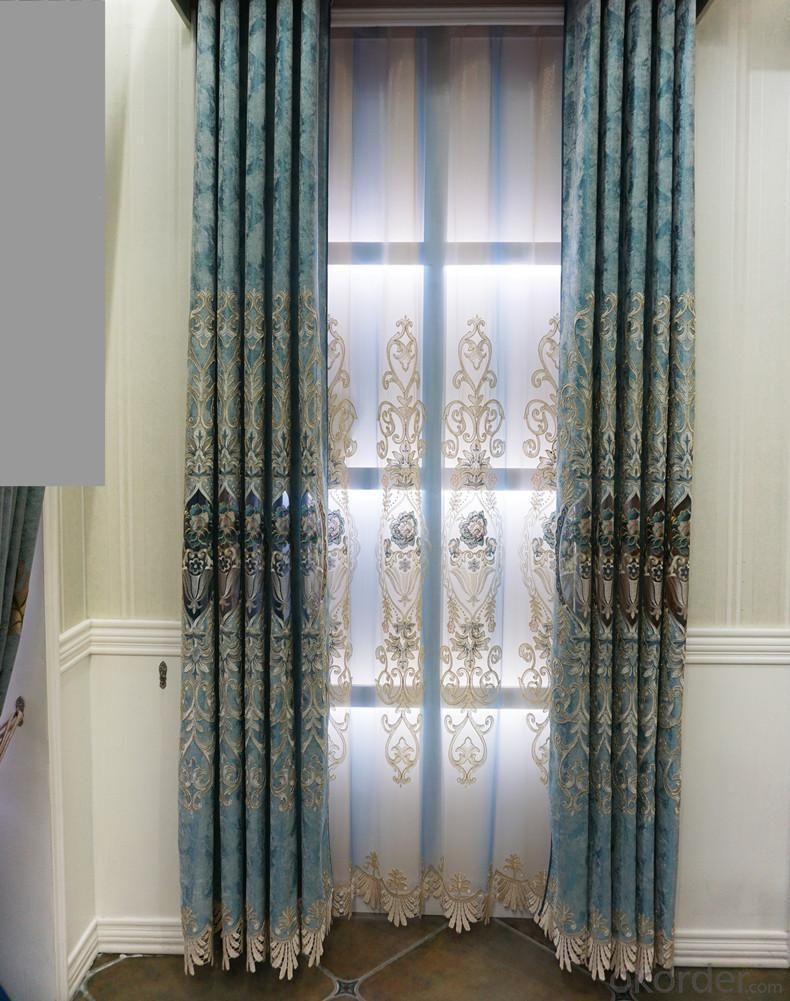
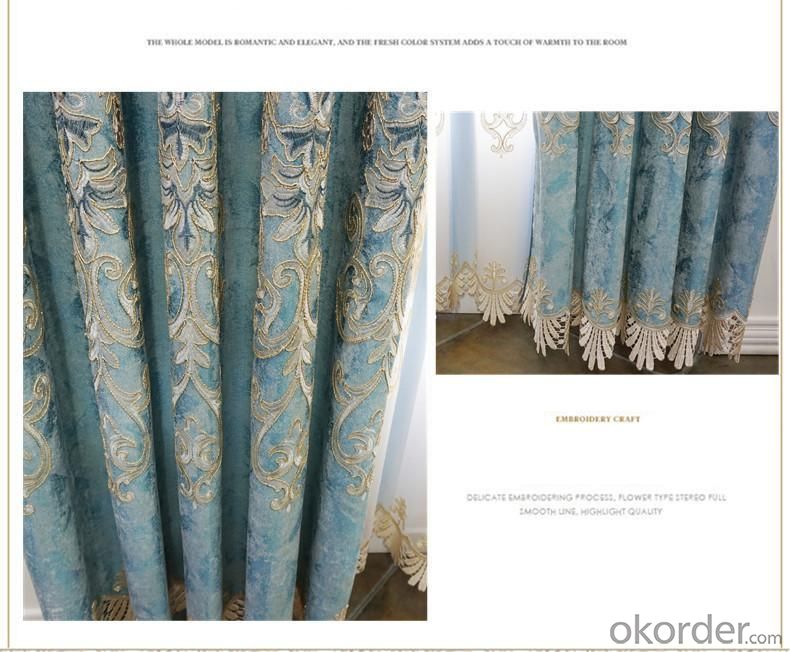

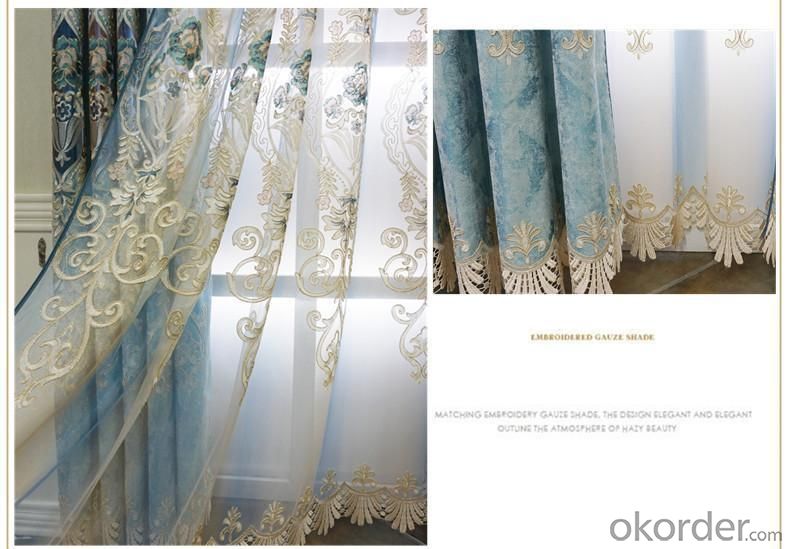
Our company dedicate to supply Chinese high quality window decoration products to the world to produce win-win situation.Our office is located in Zhejiang, China, mainly exported all kinds of window curtains, blackout fabric, print fabric,embroidery fabric, jacquard fabric, linen fabric ect.fabric curtain which are widely used in hotel, office and apartment etc.
With years of sales and purchasing experience in the tracery industry, we have a very close connections to some professional and reliable manufacturers. We could get competitive price and high quality products as our long-term cooperative relationship. We also set up the Perfect operating system from quotation, production, quality checking and transportation to protect the client's best interests.
Furthermore, we could act as your agent to help you with all your purchasing ,quality assurance and shipping issues, saving you time and money.
Please feel free to contact us we are looking forward to forming successful business relationships with new clients around the world in the near future.

Shipping Details:
Ocean shipping, Air shipping, Courier shipping
FAQ:
1.Q:Where is your company?
A:Our factory is located in Haining which near Hangzhou.
2.Q:Do you sell curtain fabric or ready made curtain?
A:We do both.
3.Q:What kind of products do you make?
A:Blackout, dimout, sheer, embroidery , upholstery, jacquard, silk tec.
4.Q:If I have my own design, quality & color, can you OEM for me?
A:Of course! We can totally make for you with your special quality & design.
5.Q:Do you accept small order,such as one piece?
A:Yes.
Fabric Making Process

- Q: Can curtains be used in a home with high humidity?
- Yes, curtains can be used in a home with high humidity. However, it is important to choose the right type of curtains and consider certain factors to ensure they are suitable for such conditions. Opting for curtains made from moisture-resistant materials like polyester or nylon can help prevent mold and mildew growth. Additionally, using a dehumidifier or ensuring proper ventilation in the room can help control humidity levels and minimize the risk of damage to the curtains. Regularly cleaning and drying the curtains, as well as avoiding excessive moisture in the area where they are installed, will also help maintain their integrity and prolong their lifespan.
- Q: Can I use curtains in a photography studio or set?
- Yes, curtains can be used in a photography studio or set. They can serve multiple purposes such as controlling light, creating a backdrop, or adding texture and depth to the overall composition of the photograph. Additionally, curtains can be easily adjusted or replaced to match the desired aesthetic or theme of the shoot.
- Q: Can I use curtains on skylights?
- Yes, you can use curtains on skylights. Curtains can help control the amount of light entering the room through the skylight and provide privacy when needed. However, it is important to choose curtains specifically designed for skylights to ensure proper fit and functionality.
- Q: How do I clean silk curtains?
- Cleaning silk curtains requires special care to avoid damaging the delicate fabric. Here are a few steps you can follow: 1. Start by checking the care label on your silk curtains. Some may be labeled as dry clean only, which means you should take them to a professional cleaner. If they are labeled as washable, you can proceed with handwashing or using a gentle machine cycle. 2. Before cleaning, remove any dust or debris from the curtains by using a soft-bristle brush or a vacuum cleaner with a brush attachment. This step will prevent the dirt from spreading or scratching the fabric during the cleaning process. 3. If handwashing, fill a basin or sink with lukewarm water and add a mild detergent specifically formulated for delicate fabrics. Avoid using bleach or harsh chemicals as they can damage the silk. Gently agitate the water to create a soapy solution. 4. Immerse the silk curtains into the soapy water and gently swirl them around. Avoid rubbing or wringing the fabric as it can cause creases or damage the fibers. Let the curtains soak for a few minutes to help loosen any stains or dirt. 5. After soaking, drain the soapy water and refill the basin or sink with clean lukewarm water. Rinse the curtains thoroughly to remove any detergent residue. Ensure there is no excess soap left behind, as it can leave a film on the silk. 6. To remove excess water, carefully squeeze the curtains without twisting or wringing them. Avoid using a dryer as it can cause shrinkage or damage the silk. Instead, lay a clean towel on a flat surface and gently place the curtains on top. Roll up the towel with the curtains inside to absorb the moisture. 7. Once the curtains are damp, hang them back on the curtain rod to air dry. Ensure they are not exposed to direct sunlight or heat sources, as this can cause fading or shrinkage. Allow them to fully dry before rehanging or storing. Remember, silk curtains are delicate and may require professional cleaning if you are unsure or if the care label indicates dry cleaning only. Taking proper care of your silk curtains will help maintain their beauty and longevity.
- Q: How do I choose curtains for a contemporary kitchen?
- When choosing curtains for a contemporary kitchen, it is important to consider the overall aesthetic of the space. Opt for sleek and minimalist designs that complement the modern style of the kitchen. Neutral colors or subtle patterns can work well, but avoid heavy fabrics or elaborate embellishments. Additionally, consider the amount of natural light in the kitchen and choose curtains that allow for privacy while still letting in ample light.
- Q: How do I measure windows for curtains?
- To measure windows for curtains, follow these steps: 1. Start by measuring the width of the window frame. Measure from the inside edge of the frame on one side to the inside edge on the other side. Note down this measurement. 2. Next, measure the height of the window. Measure from the top inside edge of the frame to the bottom inside edge. Again, write down this measurement. 3. If you want your curtains to cover the entire window, add extra width and height to your measurements. For the width, add at least 4-8 inches on each side, depending on how full you want your curtains to be. For the height, add an additional 4-6 inches to allow for proper coverage and a stylish drape. 4. If you prefer a more tailored look and want your curtains to hang straight down without any gathering, you can measure the window width and height exactly without adding any additional width or length. 5. Consider the curtain rod or track that you will be using. If you already have one in place, measure its length to determine how wide your curtains should be. If you haven't installed the rod yet, measure the width of the window frame and add a few inches to determine the rod's length. 6. It's also important to consider the curtain style you prefer. For example, if you want a gathered or pleated look, you may need to double the width measurement to achieve the desired effect. 7. Once you have these measurements, you can use them to determine the curtain size you need when shopping. Always check the specifications provided by the curtain manufacturer to ensure a proper fit. Remember to measure each window individually, as dimensions may vary even within the same room. Taking accurate measurements will help you select the right size curtains that will enhance the appearance of your windows and complement your overall decor.
- Q: Are there curtain options for a farmhouse-style decor?
- Yes, there are plenty of curtain options for a farmhouse-style decor. Farmhouse style typically features rustic and vintage elements, so you can opt for curtains made from natural materials like linen or burlap. These fabrics not only add a touch of rustic charm but also complement the farmhouse aesthetic. Additionally, consider choosing curtains in neutral colors such as white, cream, or beige to maintain the farmhouse vibe. To enhance the overall look, you can also add details like ruffles, lace, or simple patterns like checks or stripes. Remember, the key is to keep it simple, cozy, and in line with the farmhouse style.
- Q: What are the different types of curtain holdbacks?
- There are several types of curtain holdbacks available. Some common ones include tiebacks, magnetic holdbacks, tassel tiebacks, rope tiebacks, and wall-mounted holdbacks. Each type offers a unique style and functionality to hold curtains back and enhance the overall appearance of the window treatment.
- Q: How do I choose the right curtain style for a specific decor theme?
- Enhancing the overall look and feel of a room can be achieved by selecting the appropriate curtain style that complements the decor theme. To assist you in making the right choice, here are some steps to consider: 1. Take into account the decor theme: Begin by identifying the specific decor theme of your room, whether it is modern, traditional, rustic, or eclectic. Understanding the overall style of your space will help you narrow down the curtain options that will suit it. 2. Determine the desired mood and ambiance: Consider the mood and ambiance you wish to create in the room. Do you prefer a light and airy, cozy and warm, or dramatic and sophisticated atmosphere? The chosen curtain style should align with the desired ambiance. 3. Evaluate the window size and shape: Consider the size and shape of your windows. If you have large windows, opting for floor-to-ceiling curtains or long drapes can create an elegant and luxurious look. For smaller windows, shorter curtains or blinds that allow more natural light to enter the room may be more suitable. 4. Consider the fabric and pattern: The fabric and pattern of the curtains play a significant role in defining the decor style. For a traditional or formal theme, consider heavier fabrics like velvet or silk with intricate patterns. Lighter fabrics such as linen or cotton with subtle prints and patterns work well for a more casual or contemporary decor. 5. Coordinate colors: Select curtain colors that complement the existing color scheme of the room. You can either choose curtains that match the wall color to create a cohesive look or opt for contrasting colors to add visual interest. Ensure that the colors blend harmoniously with the overall decor theme. 6. Pay attention to details: Consider the curtain hardware and accessories. The curtain rods, finials, and tiebacks should also align with the decor theme. For example, if your decor is vintage-inspired, ornate curtain rods and tassels can add a touch of elegance. 7. Seek inspiration and advice: Look for inspiration in interior design magazines, websites, or social media platforms. Explore different curtain styles commonly associated with your chosen decor theme. Additionally, consult with interior designers or professionals who can provide valuable advice and suggestions based on their expertise. By following these steps and taking the time to carefully select curtain styles that align with your specific decor theme, you can create a visually appealing and cohesive space that reflects your personal style and taste.
- Q: Are there curtains available for arched windows?
- Yes, there are curtains available for arched windows. Arched windows can be a beautiful architectural feature in a home, and many people want to enhance their appearance with curtains or draperies. There are a few options for covering arched windows with curtains. One option is to use a curved curtain rod that matches the shape of the arch. This allows for the curtains to be hung in a traditional manner, while still following the curve of the window. Another option is to use custom-made curtains that are specifically designed to fit arched windows. These curtains are typically made to measure, ensuring a perfect fit for the unique shape of the window. Additionally, there are also arched curtain tracks available that allow for curtains to be hung on a track system, providing a sleek and modern look. So, whether you prefer a traditional or contemporary style, there are definitely curtains available for arched windows to suit your taste and enhance the beauty of your home.
Send your message to us
Home curtain hotel curtain blackout curtain Chenille hollow water soluble embroidery curtain fabric
- Loading Port:
- Shanghai
- Payment Terms:
- TT OR LC
- Min Order Qty:
- 70 m
- Supply Capability:
- 9000 m/month
OKorder Service Pledge
OKorder Financial Service
Similar products
Hot products
Hot Searches
